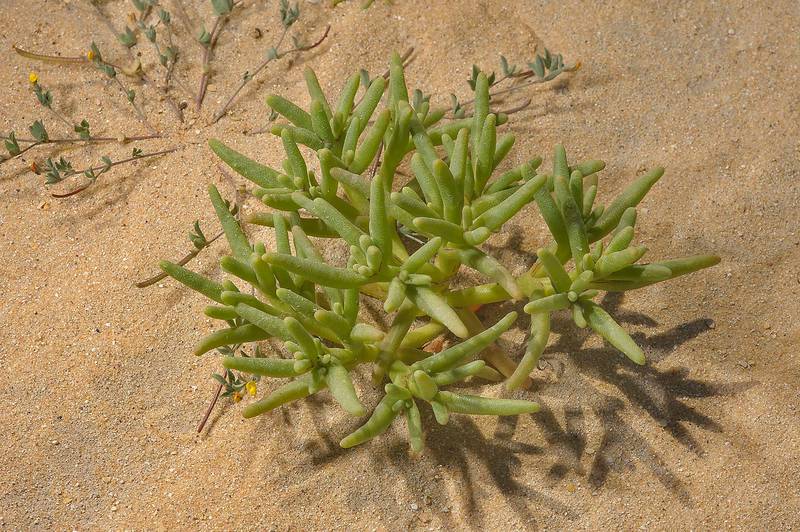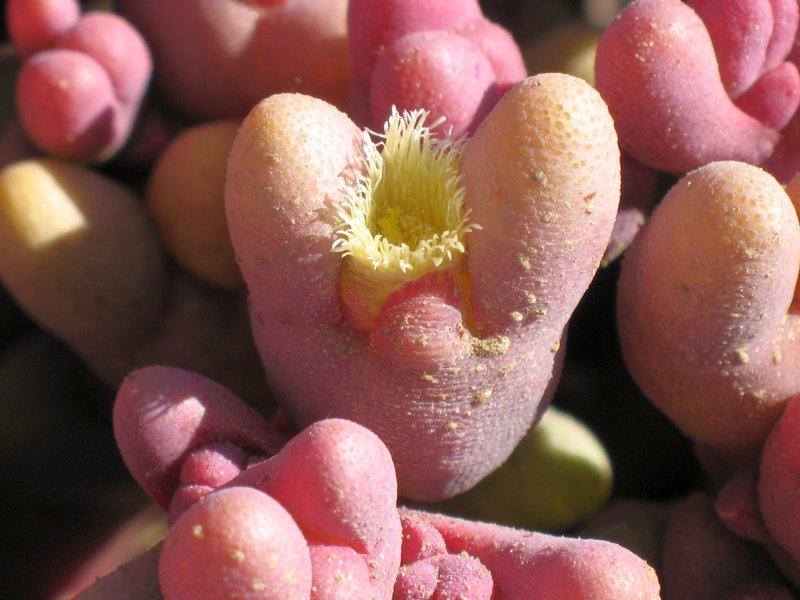| Mesembryanthemum cryptanthum Hook.f. / Syn. Mesembryanthemum forskahlii Hochst. ex Boiss, it is a succulent annual and grows primarily in the desert or dry shrubland biome.
Life Form: Th Flowering in: Apr-Aug Phytochoria: SA The native range of this species is N. Africa to Israel and Arabian Peninsula Vern: Lissan El- Homar Notes: Wild For more information: https://powo.science.kew.org/taxon/urn:lsid:ipni.org:names:362762-1 https://species.wikimedia.org/wiki/Mesembryanthemum_cryptanthum http://www.africanplants.senckenberg.de/root/index.php?page_id=78&id=7758 |
| Distribution in Libya | |||
| Al-Jafarah Plain | Zliten-Misurata Plain | Sirte Plains | Benghazi Plain |
| Telil beach. (10 km ) from Sabratah 1975 | Leptus Magna1975 Misurata 2008,2015 | Sirte 2015,2016 | Deriana. (40 km) from Binghazi 1972 Binghazi 1975 |
| Bibliographic references: | |
| First: Encyclopedia Flora of Libyan: | |
| Jafri, S. M. H. & El-Gadi, A. (1977) Flora of Libya, Aizoaceae Vol. (26) Department of Botany, Al-Faateh Univ., Tripoli, Libya. | |
| Second: Researches and PhD theses, master theses , Sorted by Newest: | |
| Elsayed, M. A. N. (2016) Relationship between Vegetation and Soil Seed Bank at Protected Versus Unprotected Sites at Coastal Habitats in Libya.CATRINA (2016), 15 (1): 59-68
https://cat.journals.ekb.eg/volume_3816.html https://cat.journals.ekb.eg/article_18337_76652686b5c99f5fd479aebab87fbcb4.pdf |
Relationship between Vegetation and Soil Seed Bank |
| Aljarroushi, M.M. & Almedham, K.E. (2015) Natural plant cover composition in Misurata area, Libya. Assiut Journal for Environmental Studies-42nd issue-July 2015. (In Arabic) | |
| Elsayed M. A. N. (2015) Floristic Composition of the Plant Cover at Surt Region in Libya. Catrina (2015), 12 (1): 63-71-2010 By the Egyptian society for environmental SCIENCES.
https://cat.journals.ekb.eg/article_18403_37c687e375b9144800a15704e68ebad7.pdf |
Floristic Composition of the Plant Cover at Surt Region in Libya |
| Baayo, Kh. A. (2008): Floristic composition and Phytochorological Analysis of Misratah area, Libya, Assiut Univ.J. of Botany 37(2), P-P. 33-78 (2008) |





